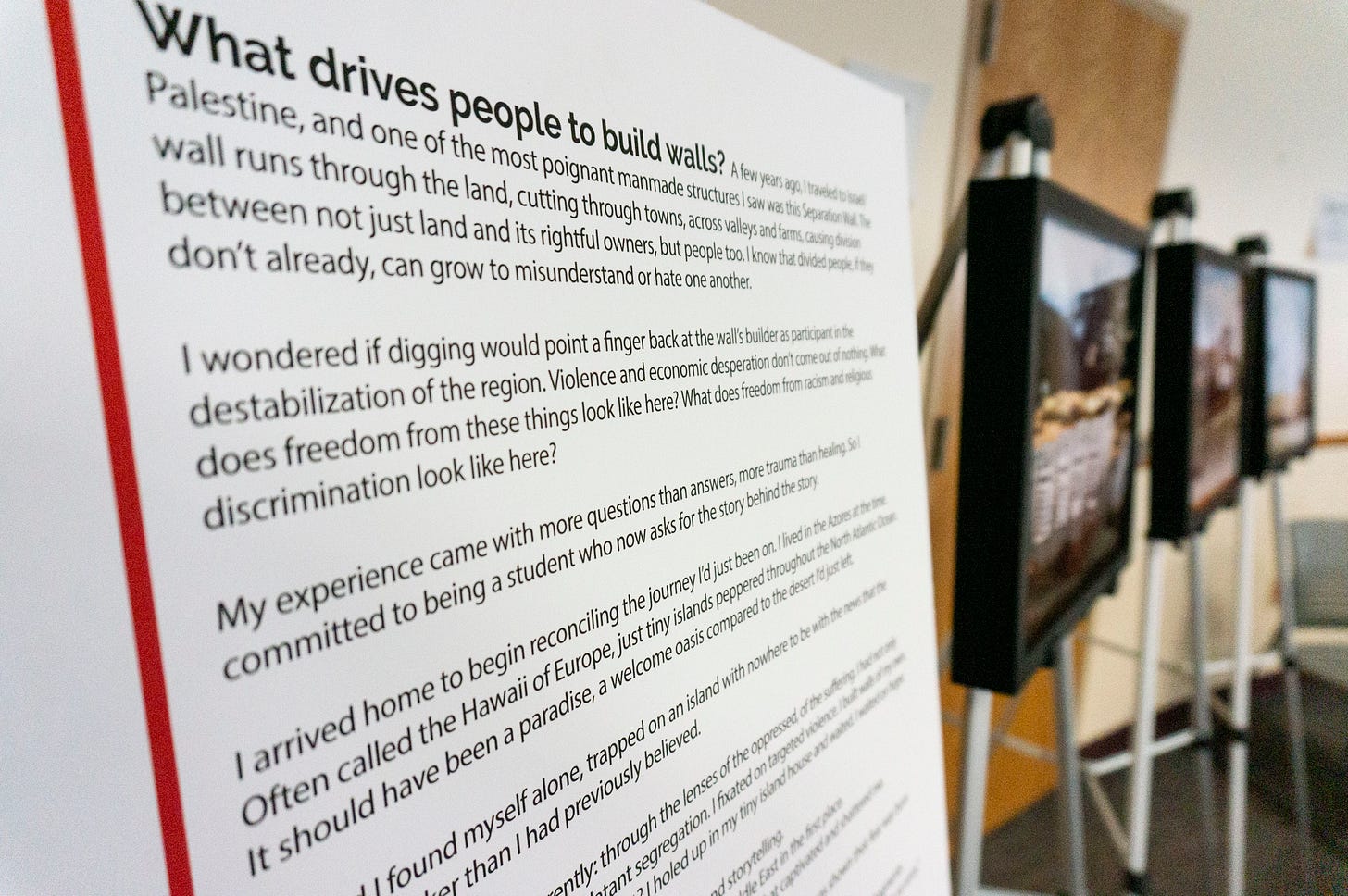Hi friends,
“Crushing Walls” is a series of digital photographs I shot years ago of live tabletop miniature scenes. The sets were made from hand-painted mini dominoes, displays of my original photography, and other natural and found objects, all inspired by my initial travels to Palestine in 2015 when I saw occupation and oppression up close.
With this series, I wanted to offer ways to explore and reflect on themes of history, reconciliation, and hope. I’m sharing it today for the same reasons: I want to start conversations, rather than end them. Art is as useful for this as written historical timelines, and sometimes, maybe even more human and effective.
Perhaps if your exposure to the Palestinian struggle is new, you will relate to the themes in this body of work where I was processing my initial experience and discovering my place in working toward building a better world with Palestinians. Perhaps you’ll see yourself in the confusion, the questions, and the longing. If your awareness or involvement isn't new, may it remind you of your own journey of commitment and the shift from not knowing, to acting with integrity on what is now known. Wherever you land, our hearts are heavy as we agonize over the genocide of Palestinians, and sometimes we need more than words. So, I offer art.
With all of the work I’m sharing, I want us to trace history and ask how it leads to collective freedom. Consider your own concerns and questions. Ask them in the comments, write them in a journal, make art about them, admit them to yourself or your people. But don’t stop exploring. Don't stop building on principles of equality and justice. Don't move on — stay.
This is how we crush walls together.
What drives people to build walls?
When I traveled to Israel/Palestine, one of the most poignant manmade structures I saw was this Separation Wall. The wall runs through the land, cutting through towns, across valleys and farms, causing division between not just land and its rightful owners, but people too. I know that divided people, if they don’t already, can grow to misunderstand or hate one another.
I wondered if digging would point a finger back at the wall’s builder as participant in the destabilization of the region. Violence and economic desperation don’t come out of nothing. What does freedom from these things look like here? What does freedom from racism and religious discrimination look like here?
My experience came with more questions than answers, more trauma than healing. So I committed to being a student who now asks for the story behind the story.
I arrived home to begin reconciling the journey I’d just been on. I lived in the Azores at the time. Often called the Hawaii of Europe, just tiny islands peppered throughout the North Atlantic Ocean. It should have been a paradise, a welcome oasis compared to the desert I’d just left.
Instead I found myself alone, trapped on an island with nowhere to be with the news that the world is darker than I had previously believed. I couldn't move on, I could only stay.
I viewed humanity differently: through the lenses of the oppressed, of the suffering. I had not only seen walls erected, I’d seen blatant segregation. I fixated on targeted violence. I built walls of my own. How could healing come after that? I holed up in my tiny island house and waited. I waited on hope.
Hope that would compel me back to action and storytelling.
Hope that would remind me why I went to the Middle East in the first place.
Hope that would shine a light in this part of the world that captivated and shattered me.
Hope eventually taught me compassion for the oppressor when I was shown their fear was born out of once being the oppressed and the suffering themselves.
Hope reminded me to dream of a future where walls come down. Where we leave fragments behind, after the dismantling, to say “this is a reminder that this happened here, and we’re so sorry.”
Like the Berlin Wall. Like perhaps the American Southern border fence in the future. Maybe even in the Koreas someday.
I think Hope fights its way to the hardest, darkest places simply to redeem.
Hope rushes in to DMZs and Dead Zones and buffer zones and crushes what we build out of fear and dismantles it stone by stone.
So we can all be free.
Until then,
P.S. Here’s a look behind the scenes of how these images were made, and more of the installation I created with a concrete covered wall echoing the Separation Wall depicted in many of the images.
This series has been exhibited at Confluence, an academic conference at Community College of Aurora, and a juried show, where it won “2nd Best in Show.”
Since then, I have offered these images in various fundraisers to fund my work in the Middle East with Palestinian refugees as a way to share my art and continue the work.
























